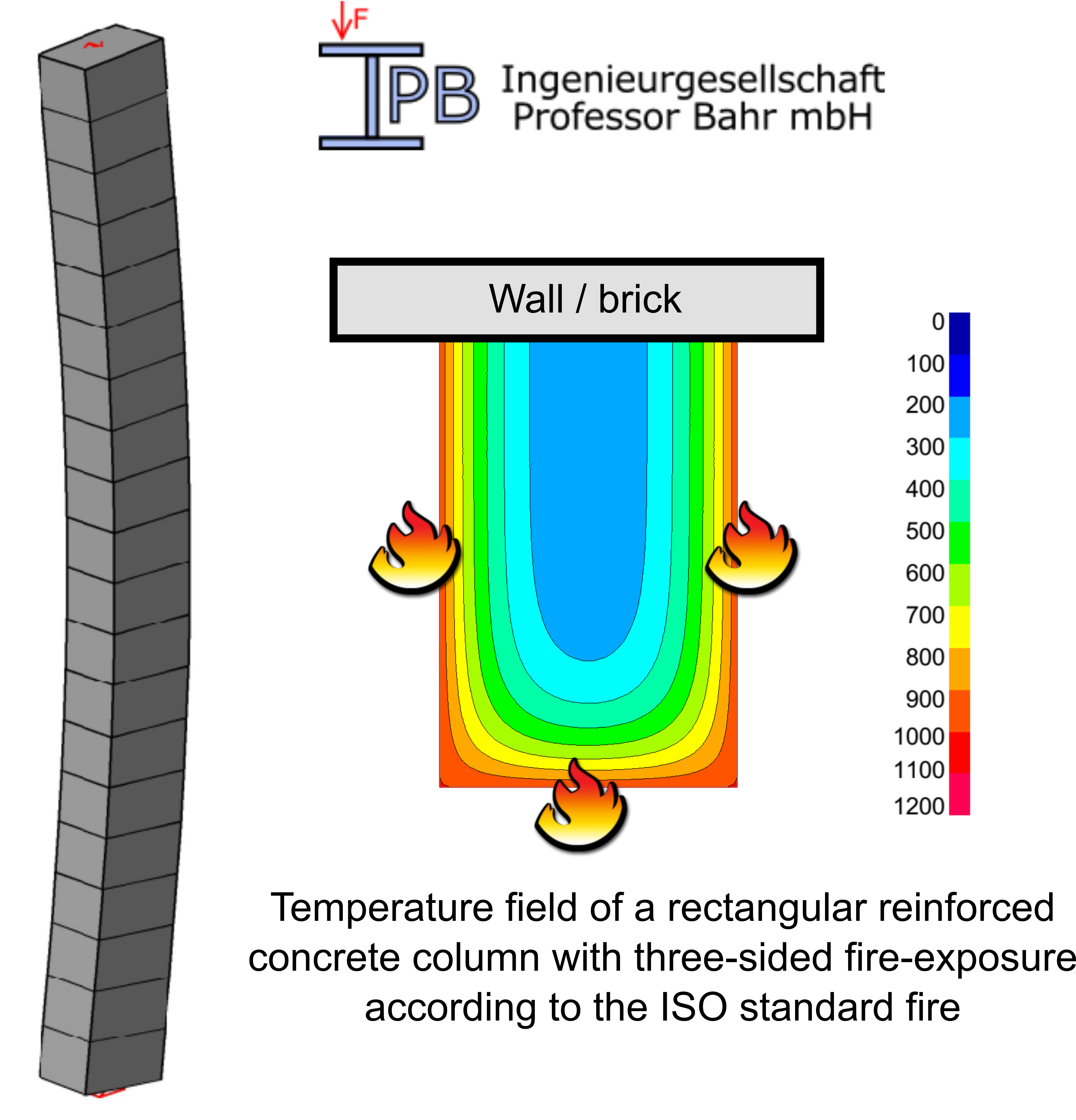Fire design of concrete structures
Concrete structures in buildings

In many European countries, such as Germany, reinforced concrete construction dominates building construction. For good reason, because fire safety requirements always play an important role here. In contrast to steel, concrete benefits from its low thermal conductivity. As can be seen in the figure, the cross-section heats up slowly, which results in an inhomogeneous temperature field. The interior of the cross-section remains comparatively cool and can thus maintain a large part of its load-bearing capacity and stiffness.
Vorteile einer Heißbemessung von Stahlbetonkonstruktionen
The Eurocode EN 1992-1-2 for the fire design of reinforced concrete structures provides some simplified design methods. However, there are always cases that are not covered. This is the often the case in existing buildings, whenever it is determined that the existing reinforcement position does not meet the requirements of the current fire protection standard. With the help of a fire design and the associated finite element methods, sufficient fire resistance can still be demonstrated under certain circumstances.
The standard EN 1992-1-2 may also not be applied to new sway buildings (such as cantilever columns or unbraced frames) because effects from Theory 2nd Order can lead to increased internal forces. With the help of fire design, these structures can also be safely dimensioned for fire-exposure.
In addition, we can take into account favorable influences, such as partial fire-exposure. In the picture above you can see a three-sided fire-exposure of a reinforced concrete column. This situation occurs regularly when the column is situated on an outer wall and is thus protected from one side. As can be seen in the thermal analysis, a significant temperature gradient occurs in the cross section, wherein the fire-turned part of the cross-section has a much greater load-bearing capacity than the fire-facing parts.
Non-binding initial consultation
It is best to call us directly and describe your specific task. Or send us an email with some key data. On this basis, we can discuss the framework conditions resulting in an attractive offer.